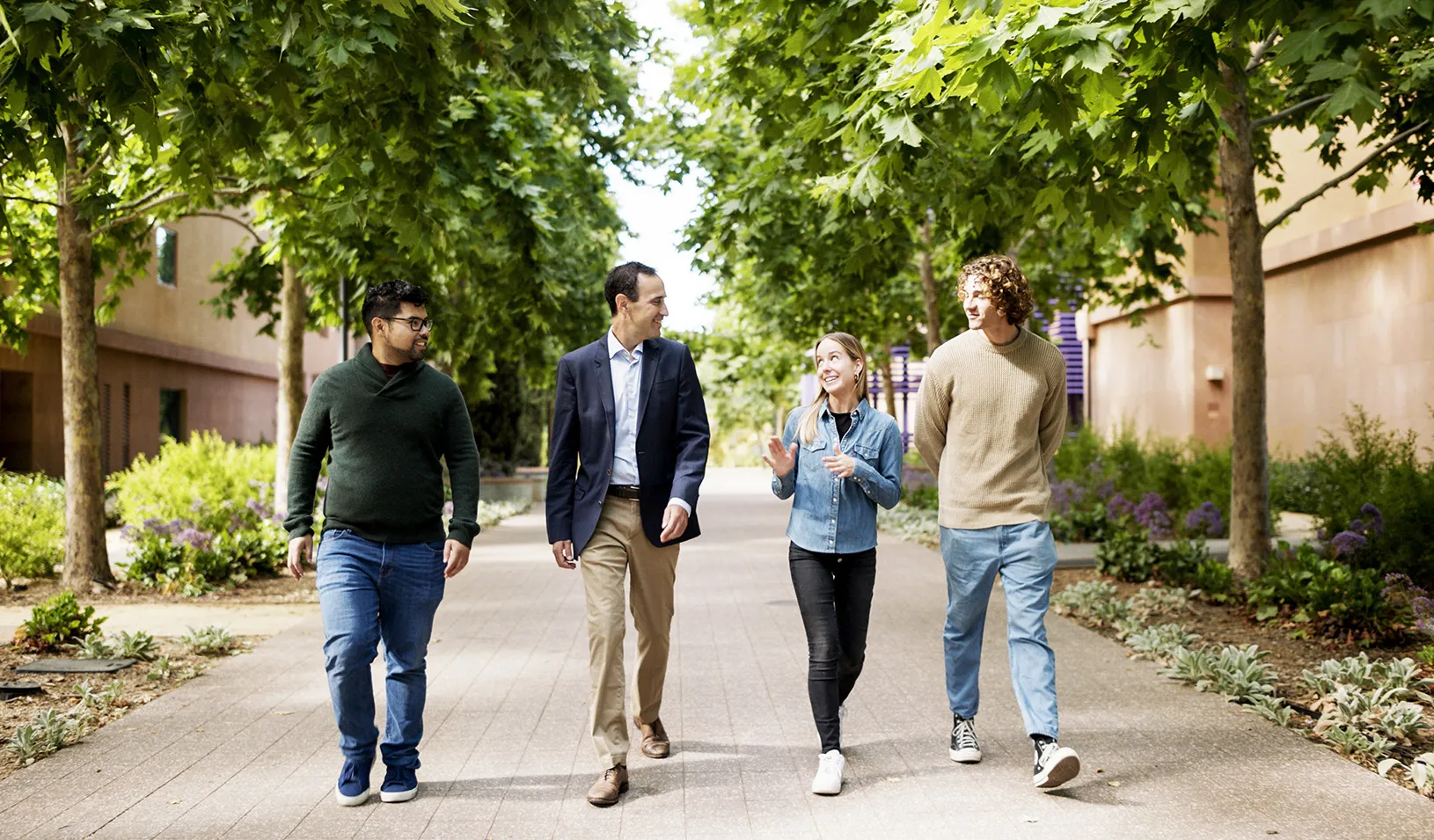Water World
Leading a social innovation study trip lands Robyn Beavers, MBA '10, in a new industry.
February 20, 2013
She was already a pioneer in the clean tech and renewable energy movements, but it wasn’t until she got to Stanford that she turned her attention to the gnarly issues involving the water resource system. “In taking many of my GSB classes, from strategy to finance to linear modeling, I realized there were lots of problems that could be solved if we brought an MBA mindset to this issue,” says Robyn Beavers, MBA ‘10. Not one to let an opportunity for exploration go by, in Spring 2010 Beavers got to work organizing the first Stanford Social Innovation Study Trip ever focused on water.
Beavers’ leadership and learning on the trip have served as huge catalysts that have propelled her into new professional territory –– the water sustainability field. This civil engineer now serves as director of commercialization for water and power technologies DEKA Research & Development. Her experience exemplifies how Social Innovation Study Trips can enhance the pedigree of any Stanford MBA.
“A study trip is a dense, compact, and powerful way to quickly ramp up on an important social issue by being exposed to all issues, players, and personalities involved,” Beavers says. “Navigating through such an intense experience reminds you that at the end of the day most of the issues involve people, not just spreadsheets and case studies! It’s a different kind of learning.”
In March 2010, Beavers, along with classmates Tom Mercer and Lazeena Rahman, led twenty MBA students on a road trip from the Bay Area to Sacramento, down through the Central Valley, and then to Los Angeles and Las Vegas. Along the way, they explored issues of water policy, water resource management, innovation in a resource-constrained environment, and the intersections between other social and economic systems. “We basically followed the flow of water from North to South,” says Beavers, who has enjoyed celebrity status in the clean tech world since her stint as founder and head of Google’s first green strategy team in 2005.
In Sacramento, the group started by exploring the politics of water in the Western United States and took a closer look at balance between human and ecosystem water needs, particularly in the Sacramento-San Joaquin Delta ecosystem. They then followed the California Aqueduct’s flow southward though the Central Valley to understand the role of agricultural water use, irrigation practices, and land management on the region’s water resources, meeting with farmers and officials alike. The cadre continued on to the more arid climes of Los Angeles and Las Vegas to see how water issues impacted the West’s cities. There, they met with large corporations, water managers from local districts and agencies to understand the economic implications and opportunities of water scarcity. They capped off the trip with a special tour of the Hoover Dam, a water-engineering marvel of the twentieth century.
“It was the first step into the exploration of an industry, and one that raised more questions than answers,” Beavers says. By witnessing the interlacing of issues from multiple perspectives, she and her trip mates realized their complexity and had an even deeper appreciation of the need for business knowledge in this arena.
With a career in sustainability, Beavers says she “respects regulations” but was confronted with its dark side during the trip. “We saw some of the unintended repercussions of legislation such as the Endangered Species Act,” she says. For example, efforts to save the Delta Smelt fish in the San Joaquin Delta have resulted in a cascade of prohibitions and restrictions that have led to farmers pumping ground water and to scientists “bagging and tagging” the very fish they aimed to protect –– which has lead to other environmental issues.
The trip is not her first foray into extracurricular life at Stanford. As an undergrad civil engineering major nearly a decade ago, Beavers was already organizing a campus-wide credited seminar on clean technologies. Prior to Stanford, she worked as a project manager for an energy efficiency consulting firm in Oakland, CA. In 2005, as head of Google’s first green strategy team, she launched Google’s growing efforts into the practical installations of clean energy such as solar power, started a corporate wide sustainability program, and spearheaded the development of a comprehensive business case for Google to be green. When Beavers returned to Stanford in 2008, she served as Recovery Act Fellow at the U.S. Department of Energy and was part of the team responsible for placing over $60B worth of investments in energy-related industries. After graduating, she became an emerging markets strategist at Vestas Wind Systems in Copenhagen, where she created WindMade.org, a global NGO that issued the first global consumer label for brands and products made with wind energy.
Now, as a result of her exposure to the ways the power and water industries are intertwined from her Social Innovation Study Trip, the impressive environmental advocate “works in water and power.” “I added a piece to my repertoire,” she says. With Dean Kamen’s engineering firm, DEKA Research & Development since early 2012, she’s been busy spinning companies out that will take small water purification and power generation units to market. “I won’t be happy until there are tens of thousands of these machines out there,” Beavers says. She has taken her water expertise into other realms, as well, having written a chapter the competitive advantage of innovative water management for the book Last Call at the Oasis, and also a chapter on approaching the future with optimism in the book Practicing Sustainability. She also serves as regular public speaker on the topic of innovation for water and power infrastructure.
“The trip exposed us to a set of challenges for us to solve,” Beavers says. “Even though we were there merely as observers and students, we all left personally invested. By forcing me to think outside the box as well as outside the classroom, the opportunity to lead a trip ended up being the very thing that catalyzed my career post-GSB.”
Marguerite Rigoglioso
For media inquiries, visit the Newsroom.
Explore More
Erin Nixon Joins Stanford GSB as Assistant Dean of Admissions

Nia Rose Froome, MBA ’23: Making Local, Fresh Food Available for All

New Research Fund Promotes Responsible Leadership for the Next Century
